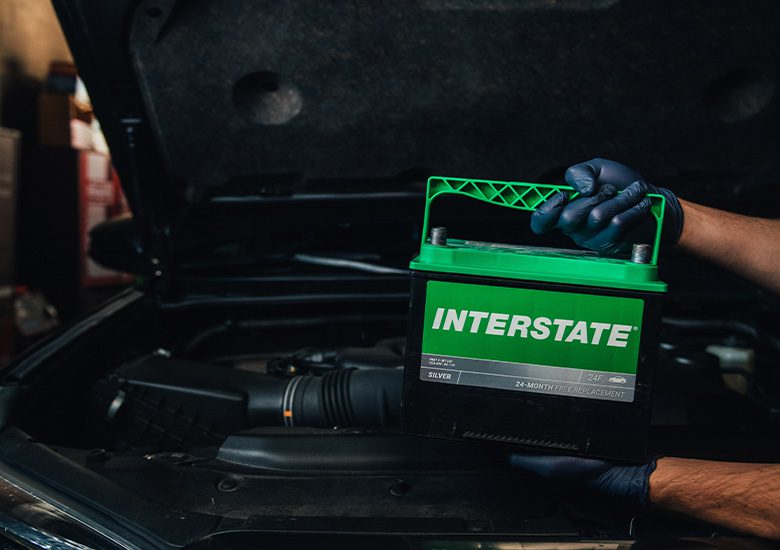
How long does it take to change a car battery at a shop?
April 24, 2025Installing a new battery in your vehicle is an essential task that ensures your car starts smoothly and runs efficiently. Whether you’re a seasoned DIYer or a beginner, this step-by-step guide will walk you through the process of installing an automotive battery safely and effectively. Replacing your car’s battery doesn’t have to be a daunting task, and with the right tools and precautions, you can have your vehicle powered up in no time.
When Should You Replace Your Automotive Battery?
Before diving into the installation, it’s important to recognize the signs that your car’s battery needs to be replaced. Here are a few common indicators:
- Dim headlights or dashboard lights: If you notice that your car’s lights are dimming or flickering, it could indicate that the battery is losing power.
- Slow engine crank: When you turn the ignition and the engine cranks slowly or struggles to start, it may be time for a new battery.
- Check engine light: Sometimes, a malfunctioning battery can trigger the check engine light.
- Old battery: Most car batteries last between 3 to 5 years. If yours is approaching or exceeding that age, it might be time for a replacement.
If you’re experiencing any of these symptoms, it’s a good idea to check your battery’s condition and consider replacing it. You can have the battery tested at an automotive parts store or consult a professional to confirm whether it’s time for a new one.
Tools You’ll Need for the Job:
Before getting started, make sure you have the following tools on hand:
- Wrenches (Typically 10mm for battery terminals)
- Gloves and safety glasses (Protect your hands and eyes)
- Battery terminal cleaner (Optional but helps to remove corrosion)
- Baking soda and water solution (For cleaning any corrosion)
- A new battery (Ensure it’s the correct size and type for your vehicle)
Having the right tools ready will make the job easier and help you avoid potential issues down the road.
Step-by-Step Guide to Installing Your Automotive Battery
1. Prepare Your Vehicle and Workspace
Start by making sure your vehicle is in a safe, well-lit environment. Park your car on a flat surface, and turn off the engine. It’s important to make sure the vehicle is off and the keys are removed from the ignition before you begin.
Once the car is securely parked, open the hood and locate the battery. In most vehicles, the battery will be located near the front of the engine bay, but it may be in different spots depending on the make and model of your car. You may need to remove any covers or panels to access it.
2. Disconnect the Negative Terminal
The first step in removing your old battery is to disconnect the negative terminal. The negative terminal is typically marked with a “-” sign and will be connected to a black cable. It’s important to disconnect the negative terminal first to avoid any sparks or short circuits.
Using a wrench, loosen the nut on the negative terminal and carefully remove the cable from the battery. You may need to wiggle it a bit if it’s stuck. Once the negative terminal is safely removed, secure the cable away from the battery to prevent it from accidentally making contact with the terminal again.
3. Disconnect the Positive Terminal
Next, move on to the positive terminal, which is usually marked with a “+” sign and connected to a red cable. Again, use a wrench to loosen the nut on the positive terminal and remove the cable. Be careful not to let the wrench touch any metal parts of the car while working on the positive terminal, as this could cause a short.
Once both terminals are disconnected, remove any mounting bracket or fasteners that are securing the battery in place. You may need to remove screws or bolts, depending on the vehicle’s setup.
4. Remove the Old Battery
With the battery cables disconnected and the battery fasteners removed, carefully lift the old battery out of the engine bay. Be aware that car batteries can be heavy (typically 30-50 pounds), so make sure to use both hands and lift with your legs to avoid injury.
Check for any signs of corrosion or leaks in the battery tray, as this can affect the performance of your new battery. If there is any corrosion, clean the tray with a baking soda and water solution before installing the new battery.
5. Install the New Battery
Now it’s time to install the new battery. Carefully place the new battery into the battery tray, ensuring that it’s positioned correctly with the terminals facing outward. Make sure the battery is seated firmly and securely in place.
6. Connect the Positive Terminal
Start by connecting the positive terminal first. Slide the red cable over the positive terminal of the new battery and tighten the nut securely with your wrench. Make sure the cable is tight enough that it doesn’t move, but avoid overtightening, as this can cause damage to the terminal.
7. Connect the Negative Terminal
Once the positive terminal is connected, move on to the negative terminal. Slide the black cable onto the negative terminal and tighten the nut securely. Again, make sure the connection is tight but not too tight.
8. Secure the Battery
If your vehicle has a battery hold-down bracket, use the appropriate screws or bolts to secure the new battery in place. This will prevent the battery from shifting or vibrating while the car is in motion.
9. Test the New Battery
Before closing the hood, double-check that the battery is installed correctly and all connections are secure. Start the vehicle to test if the new battery is working properly. The engine should start quickly without hesitation, and you shouldn’t see any warning lights related to the battery.
If everything seems to be working correctly, close the hood, and you’re done!
Tips for Maintaining Your New Battery
- Keep the terminals clean: Use a battery terminal cleaner to remove any dirt or corrosion that may build up over time.
- Check the battery charge: Periodically check your battery’s charge to ensure it’s still functioning well.
- Avoid short trips: Short trips don’t allow your battery to fully recharge. Try to take longer drives when possible.
Conclusion
Installing an automotive battery doesn’t have to be a complex or intimidating process. By following these simple steps, you can save yourself time and money while ensuring that your vehicle is running smoothly. If you’re ever unsure or uncomfortable with the process, don’t hesitate to reach out to a professional. At Interstate Batteries Chico, we’re here to provide you with all the guidance and products you need to keep your car in top shape.
Remember to always follow safety precautions and proper disposal methods for your old battery. Happy driving!



